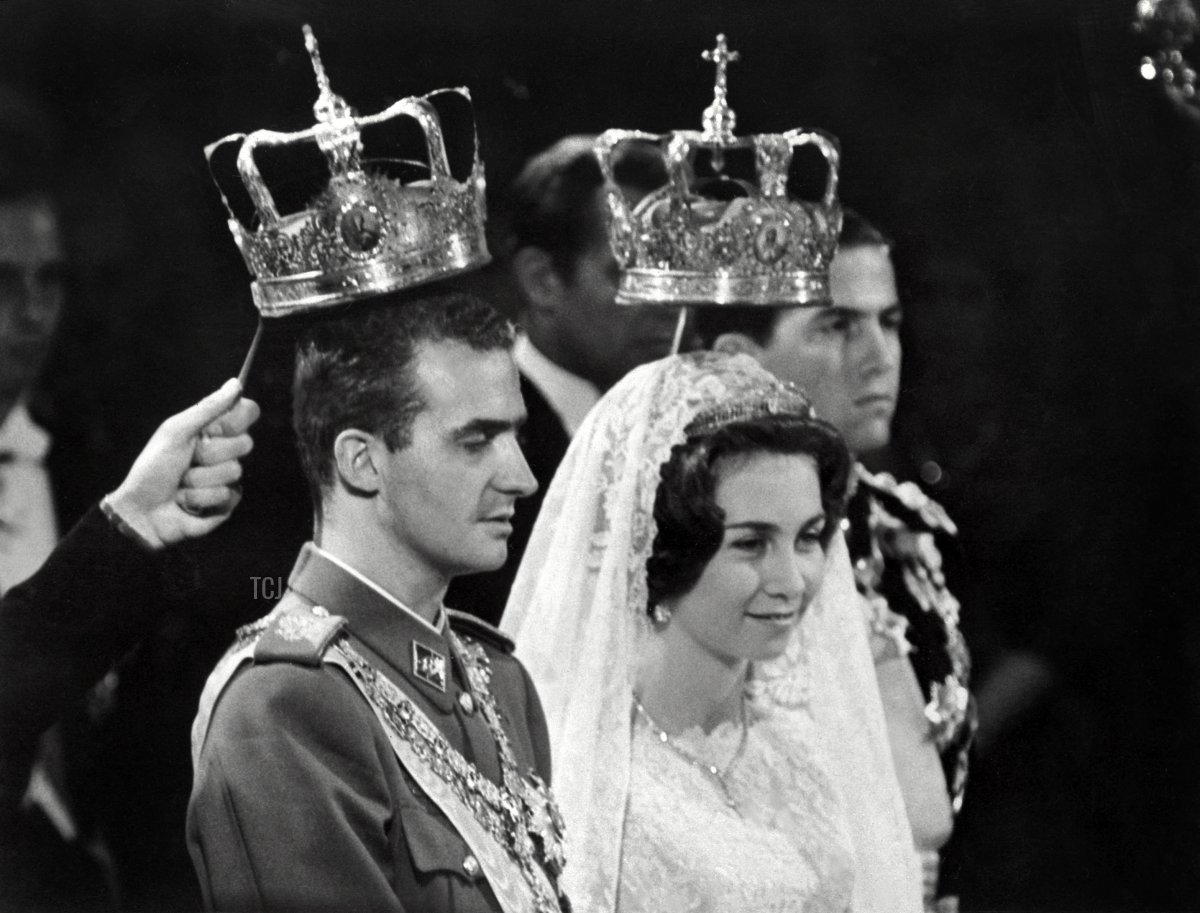
Today, King Juan Carlos and Queen Sofia of Spain celebrate their diamond wedding anniversary. We’ve got a full look back today at their royal wedding, held 60 years ago in Athens, and the royal romance that preceded it—and, of course, Sofia’s sparkling diamond wedding tiara!
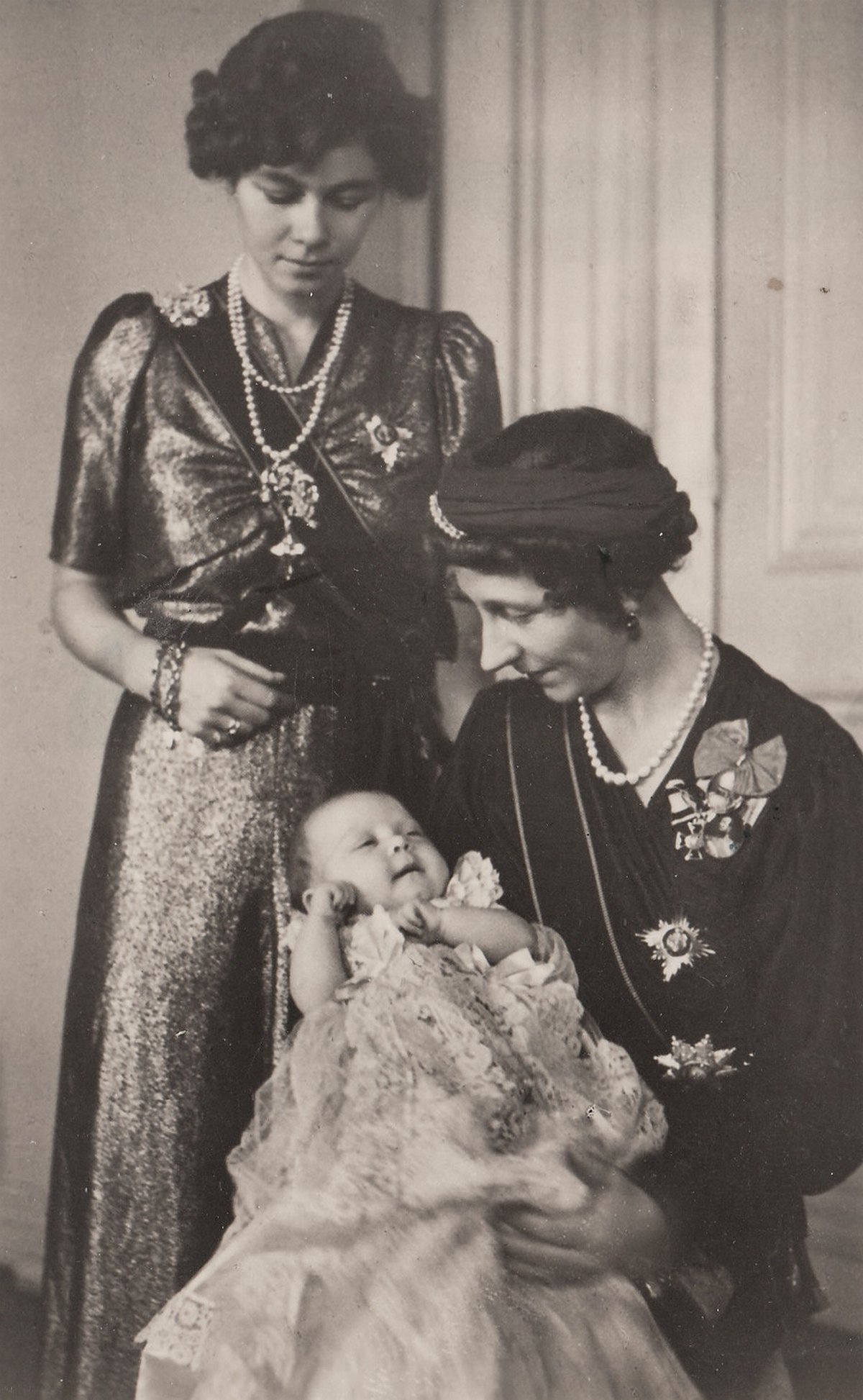
Both Juan Carlos and Sofia have deep royal roots, and both come from royal families who had a rather precarious existence in the 20th century. Sofia was born Princess Sophia of Greece and Denmark in Athens in November 1938. Her parents were Crown Prince Paul of Greece (younger brother of the reigning monarch, King George II) and Princess Friederike of Hanover. She was a descendant of royal families from Greece, Germany, Denmark, and Russia. Here, she’s pictured as a baby with her mother, Crown Princess Friederike (standing) and her maternal grandmother, the Duchess of Brunswick.
Baby Sophia was soon joined by two younger siblings: Constantine (who later became the last King of Greece) and Irene. During World War II, Friederike and her three children were evacuated from Greece. Sophia and her siblings spent part of their childhood in South Africa (where Irene was born in 1942) before settling in Egypt for several years.
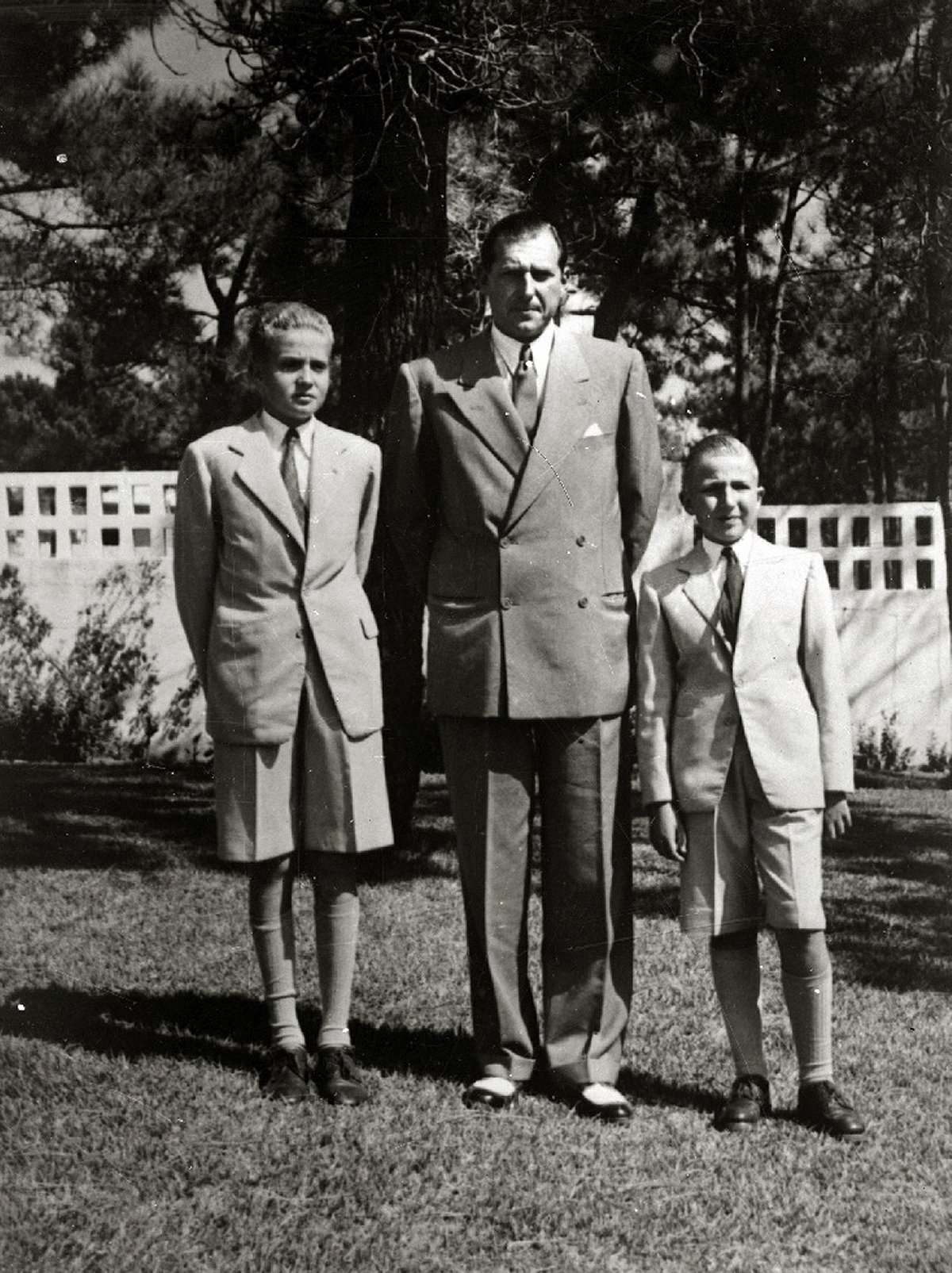
Juan Carlos knew very well what it was like to live as a royal in exile. Born in Rome in January 1938, he was the second child of the Count and Countess of Barcelona. His grandparents were King Alfonso XIII and Queen Ena of Spain, who had been knocked off their throne in 1931. After the Spanish Civil war, General Francisco Franco had taken control of the government in Spain.
A struggle ensued between the Count of Barcelona and Franco over power in Spain. The situation grew even more complicated in 1947, when Franco declared that Spain was once again a monarchy—but he eventually chose Juan Carlos as his heir instead of his father. In the midst of it all, the family also suffered a tragedy: Infante Alfonso, Juan Carlos’s younger brother, was killed in an accident with a gun at home. Both brothers, who were teenagers, were apparently involved in the accident, though there’s never been a definitive account of precisely what happened.
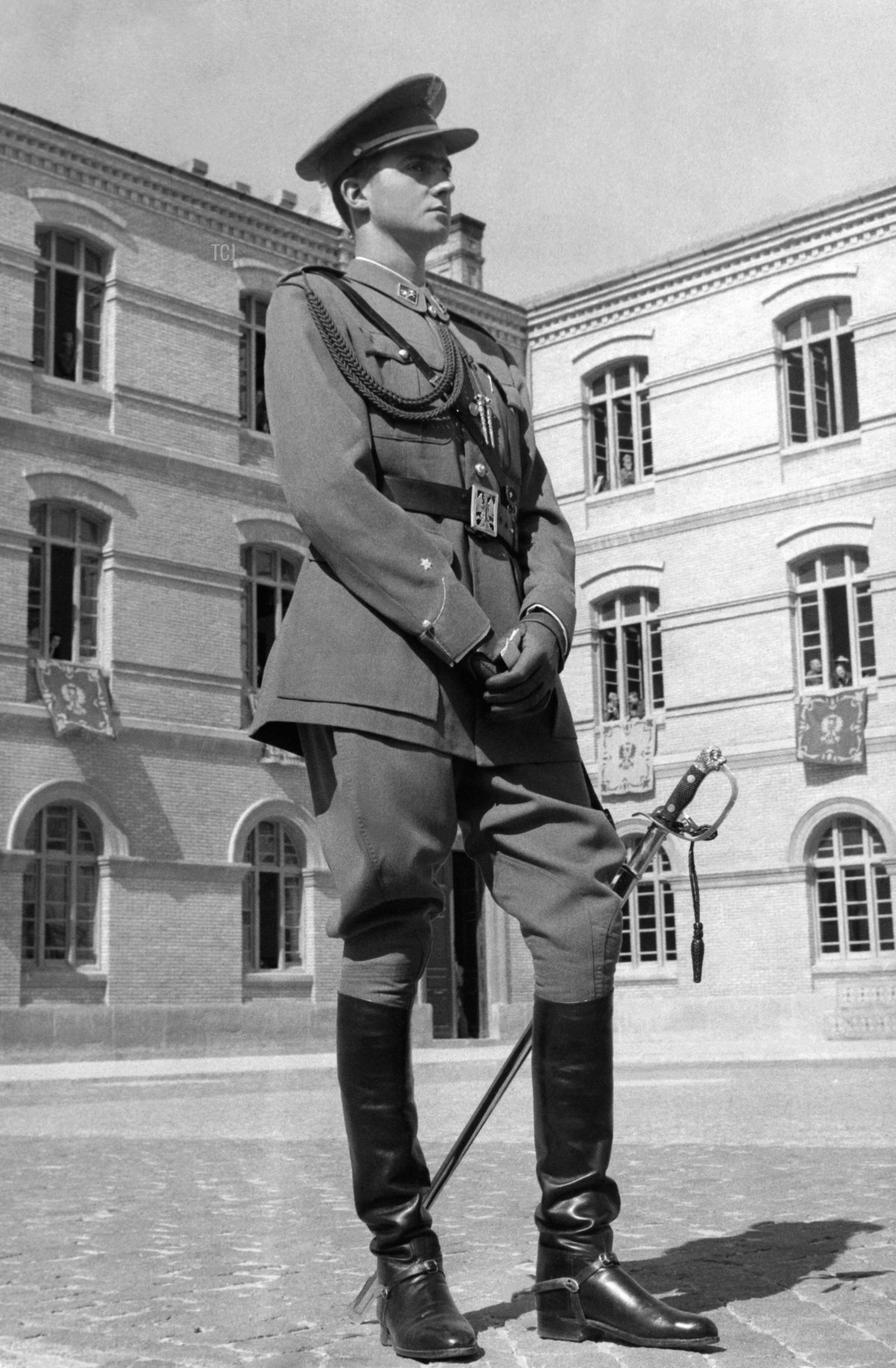
The accident occurred in the midst of Juan Carlos’s military training at the academy in Zaragoza. After finishing his army training, he also went through naval and air educational programs, before studying law, politics, and finance at the University of Madrid. It was an education designed for a future monarch, and after it was completed, he took up a series of official duties in Spain. (All of this was way more complicated than I’m able to convey here. Among other things, there was also the challenge provided by the Carlists, with their controversial links to the Dutch royal family.)
Meanwhile, people were speculating heavily about a future wife for a future Spanish king. There were strong rumors that Juan Carlos would marry Princess Maria Gabriella of Savoy, the second daughter of the last King and Queen of Italy. Gossiping matchmakers, though, had also linked her to the Shah of Iran and King Baudouin of Belgium. (She didn’t end up marrying any of them.)
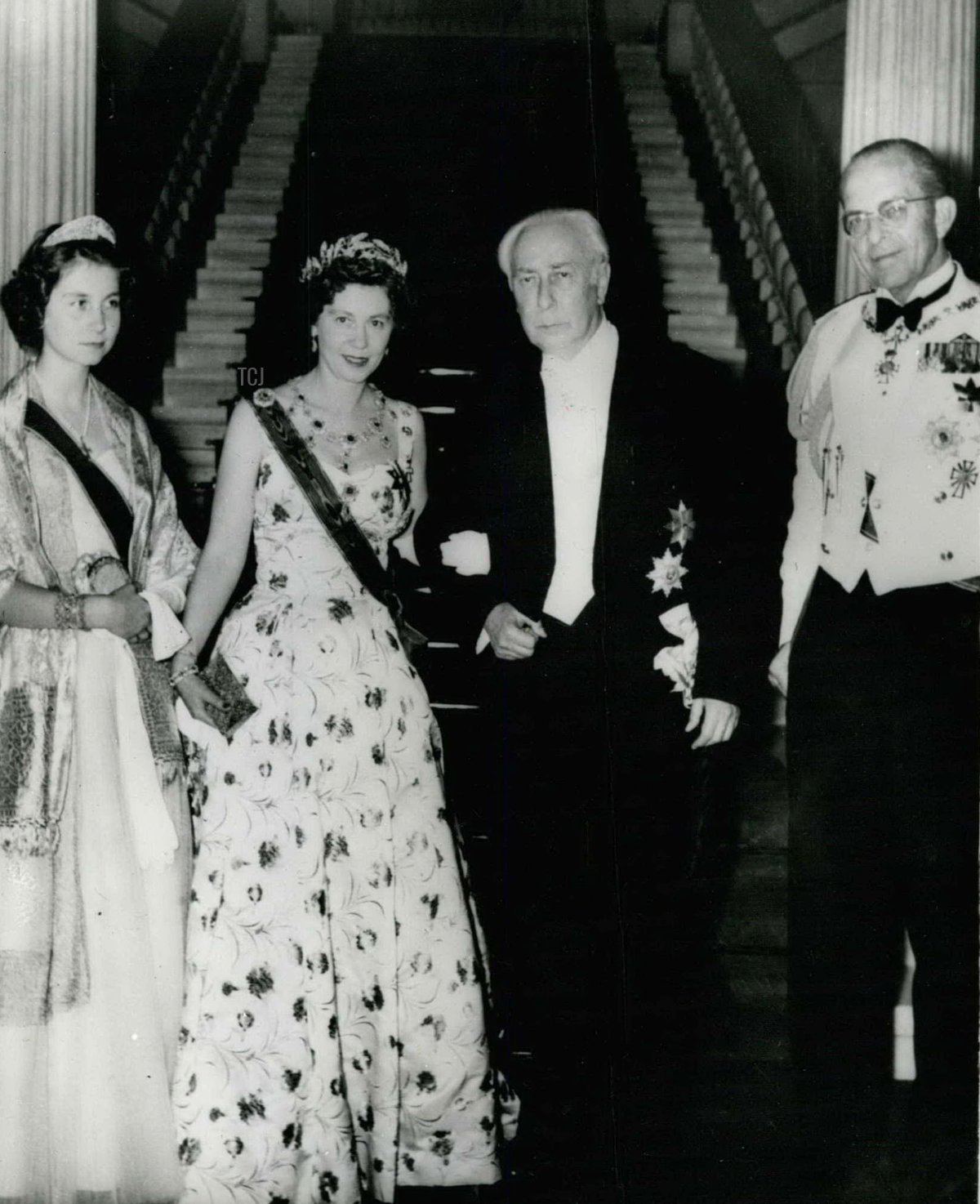
Matchmaking was also on the minds of King Paul and Queen Friederike of the Hellenes, who had ascended to the Greek throne after the death of King George II in 1947. So was tourism. They brought both efforts together in 1954 by sponsoring a special cruise in Mykonos for a whole lot of royals aboard a yacht, the Agamemnon. The Associated Press wrote, “A lot of young royal bluebloods have been thrown together on the royal cruise,” including eligible royals from France (Isabelle, Helene, and Anne d’Orléans), Italy (Maria Pia and Maria Gabriella of Savoy, plus Maria Cristina of Savoy-Aosta), Spain (Juan Carlos and his sister, Pilar), Bulgaria (Simeon and Marie-Louise), and Germany (Margarita and Ludwig of Baden, Max Emanuel of Bavaria, and Welf-Heinrich and Christian of Hanover). And, of course, Sophia and her siblings were present as well, and the cruise was the first time that she and Juan Carlos met.
By the late 1950s, as Juan Carlos was deep in his training for kingship, Sophia was accompanying her parents on official tours and engagements and wearing tiaras and grand gala jewels. In the photograph above, taken in May 1956, she joins King Paul and Queen Friederike as they host President Heuss of West Germany for a reception at the Royal Palace in Athens. (Sophia is wearing the Prussian Tiara, and Friederike is wearing the Greek rubies.) The princess also studied nursing and archaeology in Athens and served as a reserve member of Greece’s gold medal-winning sailing team at the 1960 Summer Olympics.
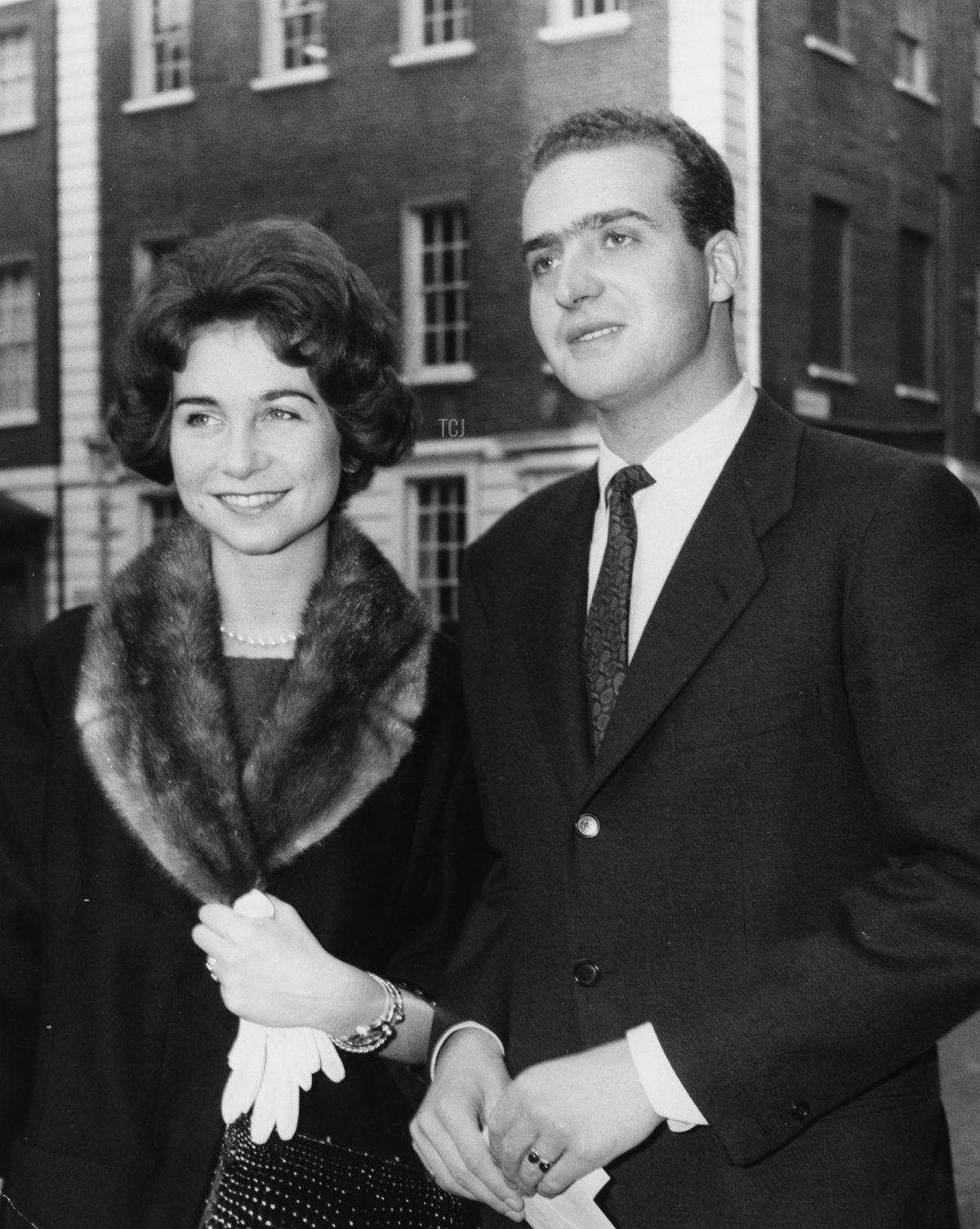
Over the years, Juan Carlos and Sophia had begun spending more and more time together. They appeared in public together in June 1961 at the wedding of a mutual cousin, the Duke of Kent. Eyebrows were raised at their increasing public profile, including sailing together at a European yachting competition in Corfu that summer. Three months after the Kent wedding, the couple became engaged.
One version of the story says that the proposal, such as it was, took place at a hotel in Lausanne. Juan Carlos had had a special engagement ring made for Sophia out of an ancient Greek coin. He apparently tossed a box containing the ring in Sophia’s direction, saying, “Sofi, catch it!” When she opened it, he simply said, “Now we’ll get married, okay?” The royal engagement was announced to the press at Queen Ena’s home in Lausanne on September 13, 1961. Back in Athens, Crown Prince Constantine confirmed press reports as a 101-gun salute was fired from nearby Mount Lycabettus.
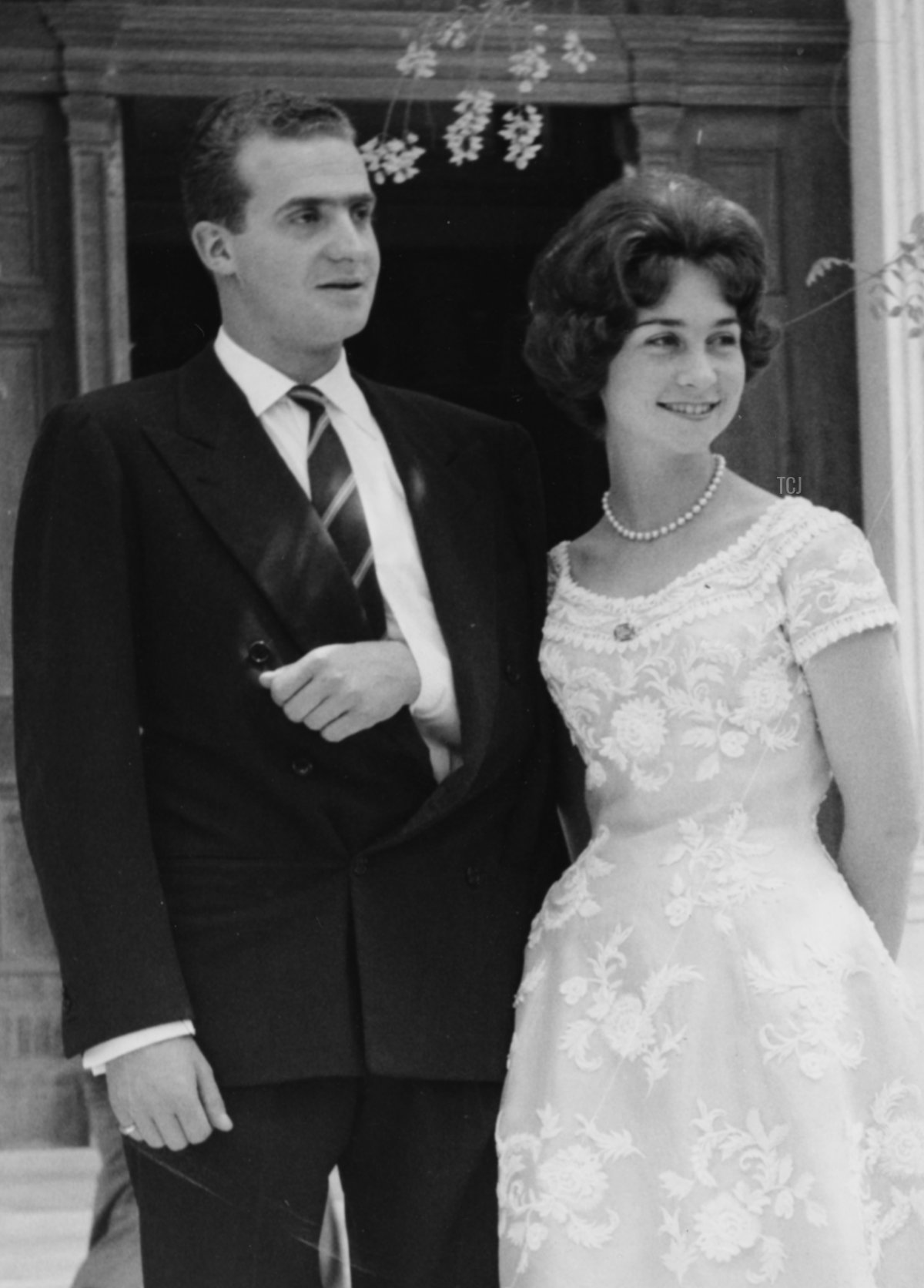
Negotiations ahead of the wedding took some time. The biggest issue was the couple’s religious differences: Juan Carlos had been raised Roman Catholic, while Sophia was Greek Orthodox. While talks continued, Sophia traveled to Paris with her mother in January 1962 to visit the salon of a Greek-born designer, Jean Dessès, who had been recruited to design her wedding gown and trousseau. He created a silver and white wedding dress, which featured simple lines, bracelet-length sleeves, and an 18-foot train, for the princess. The gown was covered in tulle and antique lace. With it, she wore the same Brussels lace veil that had been worn by Queen Friederike on her own wedding day in 1938. She anchored the veil with the magnificent Prussian Tiara, which she had begun wearing for official events years earlier. The tiara originally belonged to her grandmother, the Duchess of Brunswick, who was born Princess Viktoria Luise of Prussia.
Eventually, the religious matter was solved after a summit between Pope John XXIII., the Count of Barcelona, and Infante Juan Carlos. After a short conference, it was announced that papal dispensation would be granted to allow the couple to marry in a full wedding mass at the Catholic cathedral in Athens, even though Sophia was not Catholic. And furthermore, an additional dispensation was granted to allow them to be married in a second Greek Orthodox ceremony at the Metropolitan Cathedral. Queen Ena had reportedly helped smooth the way for the agreement. The wedding date was finally scheduled: May 14, 1962. But of course, there were continuing hiccups—not the least of which was disagreement in Greece about the dowry that would be provided to the princess by the government. The smiling couple posed for press pictures in Athens ahead of the day, and Juan Carlos’s arm was in a sling, the result of a recent riding accident.
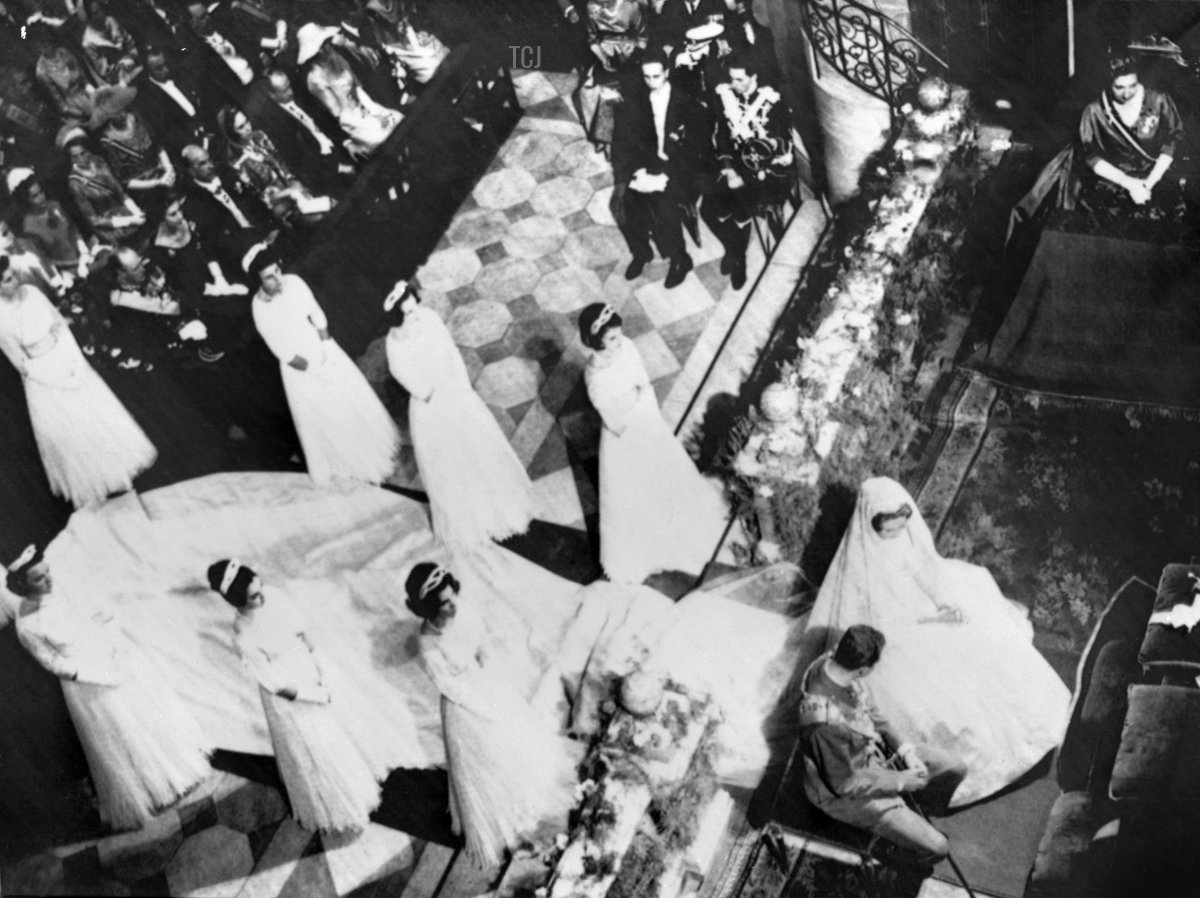
On the day of the wedding, Juan Carlos and Sophia arrived at the Cathedral of St. Dionysius the Areopagite for the first of their two religious wedding ceremonies, a Catholic mass led by the Archbishop of Athens, Venedictos Printesis, in a mixture of languages. The mass was sung in Spanish, Latin, and French, and the wedding vows were done in Spanish (for him) and Greek (for her).
Princess Sophia was attended by eight bridesmaids: Princess Irene of Greece and Denmark (the bride’s sister), Infanta Pilar (the groom’s sister), Princess Irene of the Netherlands (who would, ironically, soon marry the Carlist claimant to the Spanish throne), Princess Alexandra of Kent, Princess Benedikte of Denmark, Princess Anne-Marie of Denmark (the future wife of King Constantine II), Princess Tatiana Radziwill, and Princess Anne of Orléans.
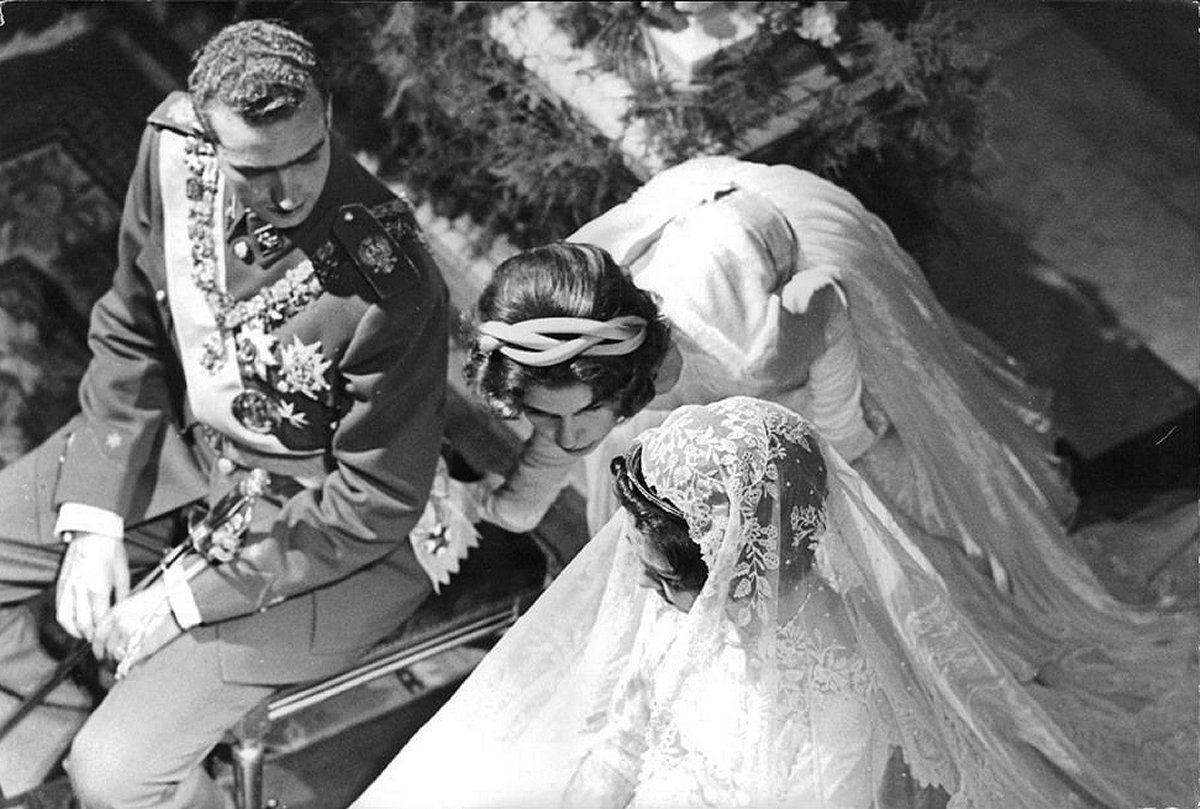
Here, Princess Irene consults with her sister during the ceremony. An AP reporter in Athens wrote that Sophia, who arrived at the cathedral with her father, “appeared nervous and worried about the long train of her wedding gown,” adding, “The princess walked hurriedly from their carriage and up the cathedral steps. Dressed in the bemedaled uniform of a Spanish army officer, the prince waited ramrod stiff at the altar. In the pews were invited royalty and about 1,000 other guests. The prince and princess whispered words of assurance to each other as they knelt at the altar.”

After the 45-minute Catholic wedding ceremony had ended to the strains of the Amen from Handel’s Messiah, the couple stepped outside to the cheers of Spanish monarchists shouting, “Long live the king!” Next, the half-married pair traveled together in a state coach to the Metropolitan Cathedral for the Greek Orthodox wedding, which was conducted by Archbishop Chrysostomos II of Athens. The larger cathedral held 2,000 guests this time. The Associated Press noted that, as the archbishop read the marriage vows, Queen Friederike burst into tears.
One of the most striking parts of the Greek Orthodox wedding ceremony is the crowning of the bride and groom. The crowns symbolize the glory bestowed by God on the newlyweds. For Juan Carlos and Sophia’s wedding, the same crowns were used that had been part of her parents’ wedding ceremony in 1938. Nine royal crown bearers participated in the ceremony: King Paul; Crown Prince Constantine; Prince Michael of Greece and Denmark; Prince Ludwig Wilhelm of Baden; Prince Christian of Hanover; Prince Amedeo, Duke of Aosta; Prince Vittorio Emanuele of Savoy; Marco Torlonia, 6th Prince of Civitella-Cesi; and Infante Carlos, Duke of Calabria.
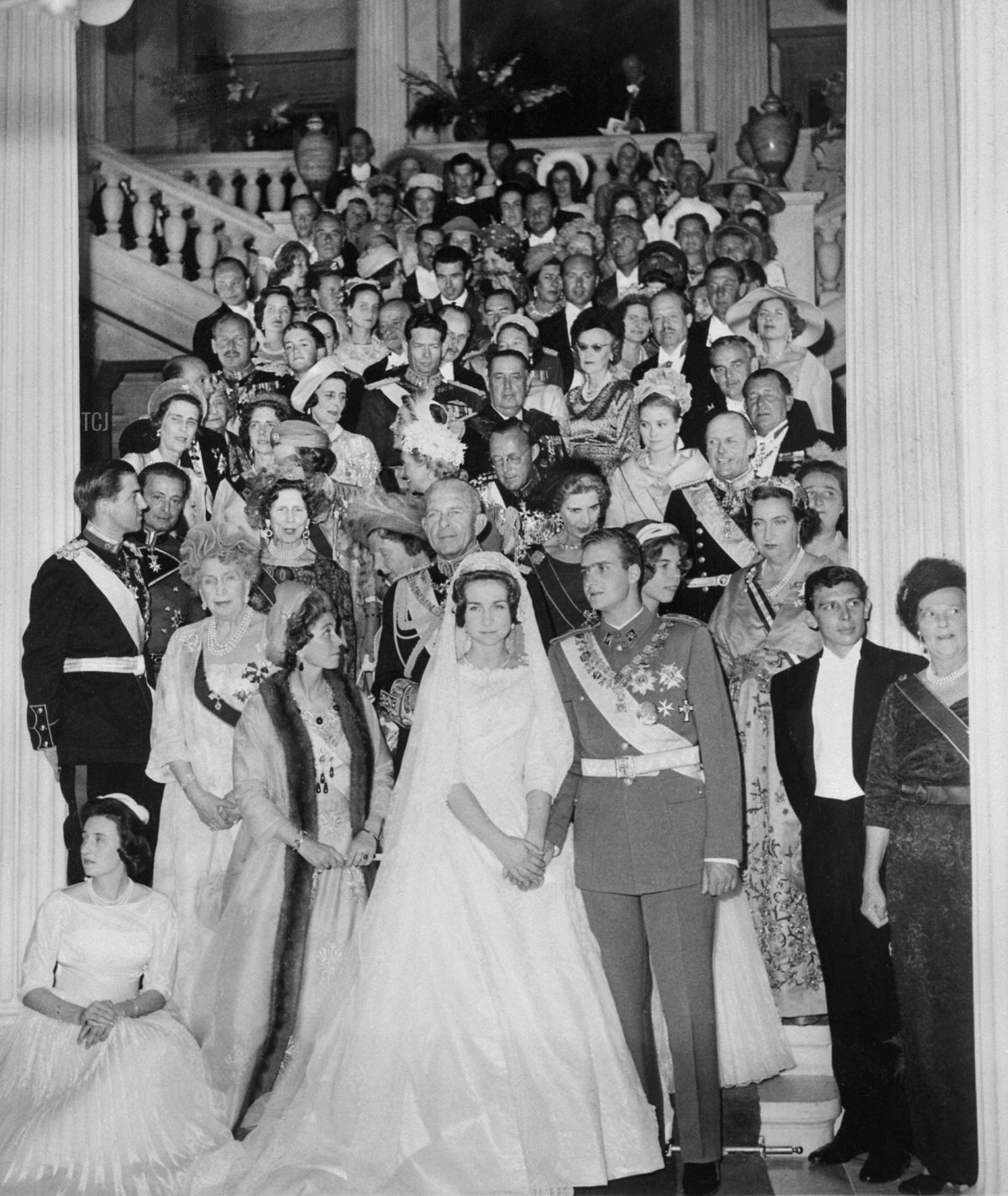
After both religious ceremonies had concluded, the couple returned to the Royal Palace in Athens, where a civil ceremony was conducted to complete the marriage rites. The newly-married princess would be known going forth as “Sofía,” the Spanish spelling of her name. Three weeks later, she also announced her intent to convert to Catholicism, a moment timed to coincide with the couple’s visit to the Vatican during their honeymoon. Eventually the situation of the couple’s families would flip-flop: the Greeks would lose their throne, and the Spaniards would regain theirs. Juan Carlos and Sofia reigned from 1975 until his abdication in 2014, and their son, King Felipe VI, is currently on the throne.
Royal guests from across Europe were present for the reception at the palace after the 1962 royal wedding. A new ballroom addition had been built to the palace specifically for the wedding, and the guests posed for a traditional photograph on the palace stairs. At the reception, Princess Anne-Marie of Denmark reportedly caught the bride’s bouquet—a very appropriate sign indeed. You’ll recognize lots of famous royal faces in the crowd here. How many can you identify? Let us know in the comments below!
Leave a Reply
You must be logged in to post a comment.